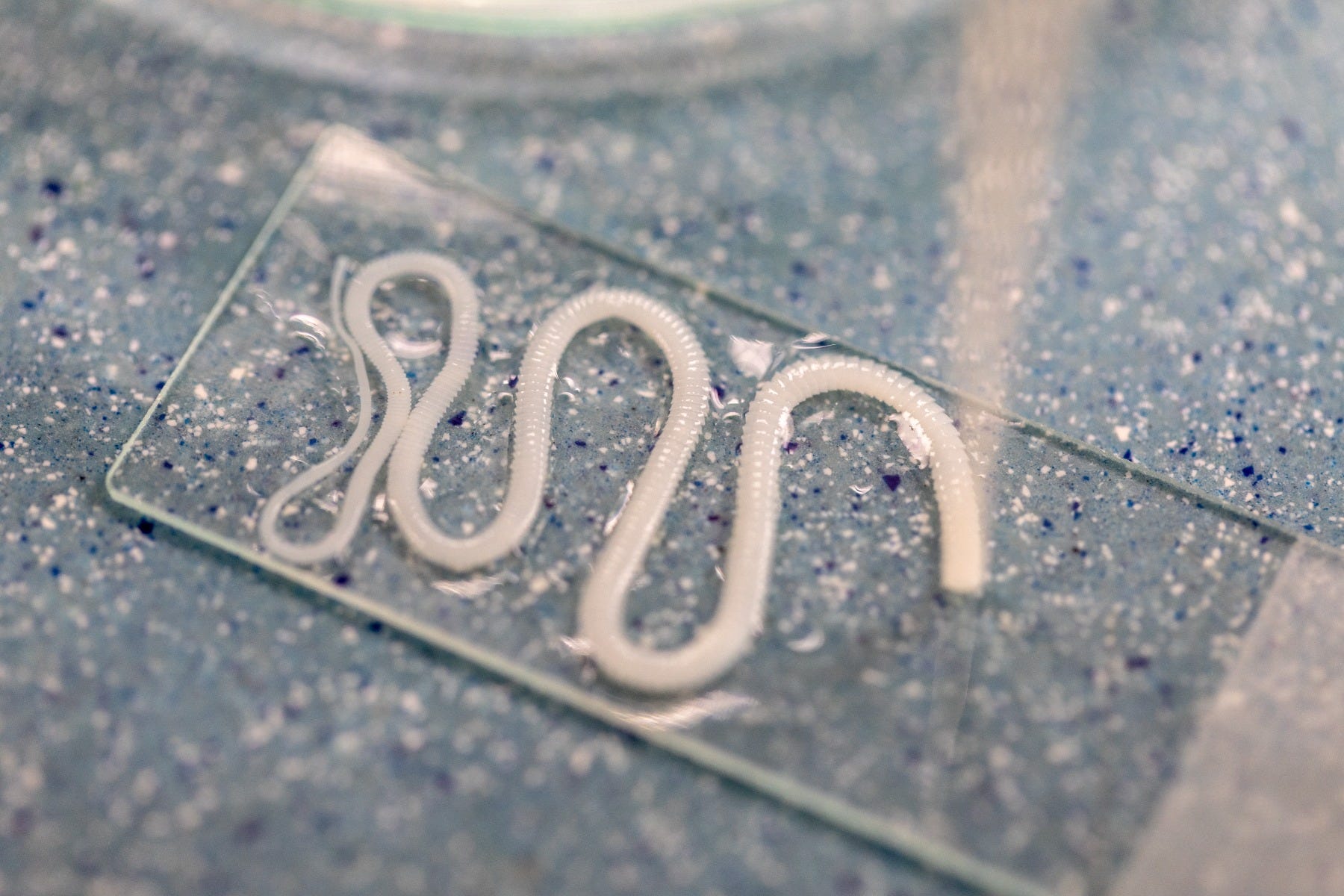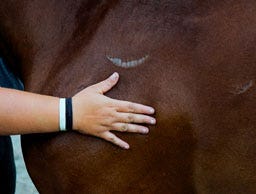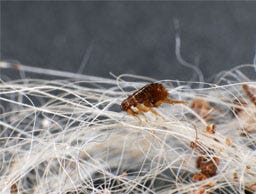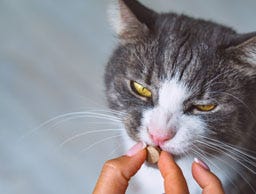How to Protect Your Pet From Worms
Knowing what kinds of parasites can affect your pet is an essential part of ensuring they are happy and healthy. Pets can pick up both external parasites (such as fleas, ticks and mites) as well as internal parasites such as intestinal worms. These worms can have a serious effect on your pet’s digestional and overall health, so it’s important for you to know the types of worms that can affect your pet, as well as the symptoms of worms and how to treat them. That’s why we’ve put together this guide full of all the information you need to keep your pet worm free!
Tapeworms in Dogs and Cats
One of the most common worms found in pets is the tapeworm (Dipylidium caninum) which attaches itself to the wall of your pet’s small intestine with hook-like mouthparts so it can feed off what the host eats. Despite its scientific name, tapeworms can affect cats as well as dogs, and can even spread to humans in certain circumstances.
An adult tapeworm is a long, flat, white worm that can reach up to 50cm in length. They’re composed of dozens of 3mm segments which continue to spread down the small intestine before the tail-end segments break off in your dog’s faeces. These can often be seen crawling around in fresh droppings and can even be found around your pet’s rear end or tail. These segments also contain the tapeworm eggs, which will lurk in the environment, waiting for the life cycle to start over.

How Do Pets Get Tapeworms?
There are a couple of ways that a pet can pick up a tapeworm, but the most common is through fleas. Flea larvae will ingest the tapeworm egg which it will carry onto the pet once it’s grown. The pet will then ingest the infected flea while grooming, where the worm can hatch and then settle in the small intestine and begin to grow into an adult tapeworm. This is why it’s so important to ensure your pet is properly treated for both fleas and worms. If you’re worried your dog may have fleas, check out our complete guide to getting rid of them. Also, to protect them against tapeworms, you should also protect them against fleas, with a suitable flea treatment for dogs, or cat flea treatment.
Another way for pets to pick up tapeworms is through scavenging or eating something that is infected with tapeworm eggs or larvae. This can be from eating raw meat from livestock or rodents as well as eating another dog’s infected faeces. It’s gross, but it does happen.
Symptoms of Tapeworms in Dogs & Cats
There aren’t many noticeable symptoms when it comes to a minor tapeworm infection besides being mindful of your dog’s faeces. Here you may be able to see the broken-off segments of a tapeworm crawling around, or even in their bedding. These parts tend to look like mobile grains of rice. If these segments have dried, they can appear like tiny yellow specks that stick to your dog’s fur or bedding.
For more severe infections, there are some symptoms you can look out for, including:
- Your pet scooting on their bum and trying to lick or bite the area.
- Vomiting, however, can be a sign of various things, from eating spoiled food to something more serious. If your pet is vomiting regularly or displays other symptoms like diarrhoea, lethargy or inappetence, you should consult your vet immediately.
- Weight loss despite eating normally. This is from the tapeworm feeding on the nutrients in your pet’s food. If your dog is losing weight without any cause (increased exercise or change in diet, etc.), then consult your vet immediately.
It can be difficult to diagnose a tapeworm infestation as the tapeworm will not shed segments every time your pet poops. However, a vet may be able to diagnose them with an appropriate stool sample.
Roundworms in Dogs and Cats
Other worms your pet could pick up are known as roundworms because of their tubular or round shape. Also referred to as nematodes or ascarids, roundworms are another kind of internal parasite that live within your pet’s intestine and feed off the partially digested food contents. They can grow inside the intestines to be 13 inches long and are as thick as a pencil. Plus, they can live for years inside of a host where an adult female roundworm can lay more than 200,000 eggs a day, passing through faeces and spreading the infection further.
There are two kinds of roundworms that your pet can pick up, which are Toxocara canis and Toxascaris leonina. Toxocara canis is the more dangerous of the pair and can spread other diseases to your pet as well as being able to be transmitted to humans. They can pose a significant threat to children as they have smaller intestines, and the worms have less room to grow. This can result in:
- Stomach pain and bloating
- Vomiting
- Worms coming out of the animal’s nose or mouth
- Fever
- Wheezing and coughing
- Weight loss or failure to grow
- Blocked intestines
In some severe cases, children may even need to undergo surgery to remove the roundworm blockage from their intestines, which is why it’s important to treat your pets regularly for worms, especially if you have children in the home.
Roundworms are the most common kind of intestinal worm, and most pets have been infected with them at some point in their lives, usually when they’re puppies or kittens, as mothers can pass roundworms to their young. Dogs can pass roundworms on to puppies via the placenta whilst they are still in the womb. Both cats and dogs can also pass on roundworms to the litter via their milk.

How Do Pets Get Roundworms?
Much like tapeworms, roundworm infestations start when an animal consumes the roundworm eggs. The eggs pass through the animal's digestive system and settle in the stomach, where they hatch and grow before starting the life cycle again.
Your pet can pick up these parasites in a variety of ways, including:
- Eating or licking infected faeces
- Eating infected soil or drinking infected water
- Eating raw meat from an infected animal, particularly cats who like to hunt rodents that act as a paratenic host accidental transport host).
As mentioned above, puppies and kittens can even catch roundworms from their mother while in the womb or consuming milk. Much like with children, kittens and puppies don’t have enough space for the roundworms to grow properly, which can result in bloating and intestinal blockages. This is why it’s important to start an effective worming routine as soon as possible. You can browse our range of puppy and kitten worming treatments below.
Symptoms of Roundworms in Dogs & Cats
Most pets (particularly adult pets) don’t show any symptoms of a roundworm infection unless it has become severe. This can happen much quicker in puppies and kittens and you may notice the following symptoms:
- Diarrhoea
- Vomiting
- Weight Loss
- Dull hair
- Potbellied appearance
Growing animals may also exhibit signs of stunted growth from the lack of nutrients, and in severe cases, dogs can throw up roundworms or cough them up if they have entered the lungs. If you think your pet may have roundworms, you may be able to spot them in their faeces or vomit. Sometimes, a vet can properly diagnose roundworms in your pet by mixing a stool sample with a liquid solution that causes the roundworm eggs to rise up. They can then be viewed beneath a microscope and identified.
Hookworms in Dogs and Cats
Hookworms (specifically Ancylostoma caninum, Ancylostoma brasiliense, and Unicinaria stenocephala) are another type of parasite that can live inside your pet’s large intestine. There, they will attach themselves to the lining of your pet’s intestinal wall. However, instead of consuming nutrients from your pet’s food, the hookworm will feed off your pet’s blood. Hookworm eggs are then released into your pet’s digestive tract, and they are passed back into the environment through faeces to start their life cycle again.
Hookworms receive their name from their visibly bent head and mouth parts, which resemble a hook, and this allows them to anchor themselves onto your pet’s intestinal lining. These worms are thin and white, growing between 8 - 15 mm long, depending on age and sex. As with tapeworms and roundworms, hookworms can also be spread to humans, or a human can pick them up from the environment.

How Do Pets Hookworms?
Like other parasites, hookworms can be picked up by your pet from its environment, particularly through eating infected soil, faeces, or drinking infected water. However, unlike the previous worms we’ve mentioned, hookworms can also be picked up through your pet’s skin as larvae. There, they will make their way through the bloodstream to the lung before being coughed up and ingested to find themselves in the intestines. Here, they will grow and continue the life cycle.
Like roundworms, hookworms can also infect litters of puppies and kittens by being ingested through their mother’s milk and passing through the placenta while they’re still in the womb.
Symptoms of Hookworms in Dogs & Cats
As pets often pick hookworms through the skin, you may be able to see the site of infection where the hookworm larvae burrowed through. Hookworms feed on blood, which can also cause your pet to suffer from anaemia, the symptoms of which include:
- Pale gums, ears or eyes
- Weakness or lethargy
- Weight loss
- Bloody diarrhoea or black stools
- Poor growth
If you notice any of these symptoms in your dog, consult your vet immediately as they can not only be a sign of a hookworm infestation but also other illnesses, and if left untreated, a hookworm infestation can be fatal.
Whipworms in Dogs and Cats
Whipworms (also called Trichuris vulpis) are another common worm your pet can become infested with. They can grow up to 6mm long and live in the cecum (a pouch that forms in the first part of the large intestine) and the large intestine of your pet, where they attach themselves to the mucosal lining.
They got their name from their peculiar shape: a thick anterior end with a long, thin posterior end which resembles a whip. Despite their small size, whipworms can cause a lot of discomfort to your pet as they irritate their internal organs and are more likely to spread disease than the other worms mentioned in this guide. While whipworms are found in the UK, they are more commonly found in Europe and are far more likely to infect your dog than a cat.
Whipworm eggs are passed from your pet into the environment through their faeces, where the eggs can survive for up to five years, giving plenty of time for them to reinfect another host and start their lifecycle over. Once a female whipworm has hatched inside your pet, it takes approximately 11-12 weeks for them to lay their eggs, which they do at an inconsistent rate. This makes it difficult to diagnose a whipworm infestation early on and can result in many false negative tests.

How Do Pets Get Whipworms?
Pets become infected with whipworms by ingesting infected matter from their environment. This can be through the soil, faeces or water, as well as from grooming themselves, and rolling or stepping in something while outdoors. Whipworms may not lay many eggs, but due to their robust nature and resistance to drying out, the eggs can be spread across a wide area and tend to be most common in places with a lot of dog traffic, such as dog walking spots and kennels. However, just because an area has been deemed a low whipworm risk, doesn’t mean your pet can’t still be infected.
Symptoms of Whipworms in Dogs & Cats
Whipworms can cause a lot of damage and discomfort to your pet, so knowing the signs of an infection is essential and should be taken seriously. The most common signs of whipworms in your pet include:
- Watery, bloody diarrhoea
- Weight loss
- Dehydration
- Anaemia
- Overall health decline
Unlike the other worms mentioned, whipworms are not zoonotic and so cannot be passed from your pet to you.
Heartworm in Dogs and Cats
Heartworms are stringy, spaghetti-looking worms that, after entering your pet, live in the right side of their heart as well as the main artery to the lungs. The males can reach between 4 and 6 inches in length, while females are much longer, at an average of 10-12 inches.

Thankfully, heartworms are not native to the UK, but that doesn't mean you shouldn't worry about them. They are, however, a serious risk to dogs that are brought over from warmer countries, as well as those that travel outside of the UK.
If left untreated, heartworms can be fatal to your dog, so make sure you take all the necessary precautions before taking your dog on holiday or when adopting a dog from abroad.
Where Do Pets Get Heartworms?
Much like tapeworms, heartworms use other parasites to enter your pet. They're transmitted through the bite of an infected mosquito. The tiny offspring of these worms (known as microfilaria) travel through the infected animal's blood and are ingested by mosquitos when they bite to drink blood. Then, the infested mosquito transmits them to a new host when they bite another dog, allowing the heartworm infestation to take root. Once inside your dog's body, the offspring of these worms travel through the blood to the heart, which can take them up to six months. There, they mature into mature worms that can cause significant damage to your dog's heart and lungs, as well as other organs that linger even after the parasite is gone. Some of the conditions heartworms can cause in dogs include:
- Inflammation of the blood vessels
- Blocked blood flow from the heart and lungs
- Pulmonary Thrombosis (clots in the heart)
- Heart and kidney failure
While cats are not the natural host for heartworms, they can still catch them, although most worms will not make it to maturity inside a cat. This makes heartworm hard to diagnose in cats, but even the larvae in their bloodstream can do damage to your cat, so it's always important to be cautious when adopting a cat from abroad in case they're infected.
Symptoms of Heartworms
At the start of a heartworm infestation, your pet is unlikely to show many symptoms. This is a problem because it takes these worms so long to mature that by the time you notice symptoms, considerable damage may already be done to your dog's vital organs. As the infestation progresses, your dog will begin to show significant symptoms, which include:
- Mild but persistent cough
- Reluctance to walk or play
- Fatigue after slight activity
- Decreased appetite leading to weight loss
The latest stages of a heartworm infection cause a condition called caval syndrome, by which point the number of worms in the heart can cause sudden blockages of blood flow, potentially leading to cardiovascular collapse. The key symptoms of a heartworm infestation of this magnitude include:
- Labored breathing
- Pale gums
- dark, coffee-coloured urine
Dog who are suffering from caval syndrome will require surgery to remove the worms from their bodies. Dogs who do not receive veterinary intervention rarely survive.
Lungworms in Dogs and Cats
Lungworm is now recognised as an endemic condition across the UK as the number of cases reported by veterinary clinics rises. These white, thread-like worms can affect both cats and dogs, as well as foxes, which is part of the reason why it's become such a widespread problem. What's worse, only half of pet owners across the UK know what lungworms are, and only 33% take action to treat their pets for them.
While lungworm is less common than other intestinal worms, if left untreated, it can cause damage to numerous organs, including the heart and lungs, and can be fatal in dogs.

Where Do Pets Get Lungworm?
Much like other types of worms, lungworm is spread through the faeces of an infected animal. However, the key difference between lungworm and other such worms is that they can also infect slugs, snails and frogs. Your dog or cat can pick up these up while sniffing or digging in the undergrowth, eating grass, or hunting. The larvae for these worms can even be released into the slime trail left behind by slugs and snails, meaning any toys left outside that slugs might crawl over can also be infected.
Symptoms of Lungworm in Dogs & Cats
Unfortunately, the signs of lungworm in pets can easily be confused with other illnesses, so it's essential to recognise the possible symptoms so you can contact your vet as soon as possible for a professional diagnosis.
The symptoms of lungworm to look out for include:
- Behavioural changes (such as lethargy, depression or seizures)
- Coughing
- Tiring quickly, even after slight exercise
- Loss of appetite leading to weight loss
- Vomiting and/or diarrhoea
- Blood clotting problems (such as excessive bleeding from minor wounds, nose bleeds, bleeding from eyes, pale gums)
Many worming treatments for dogs and cats tend to target intestinal worms, so they may not protect your dog from lungworms. When choosing a worming treatment for your pet, always read the packaging to ensure the treatment targets all the worms you need.
Treating Cats and Dogs for Worms
No matter how well-trained or behaved your pet is, they still have a mind of their own. Cats are always going to have the instinct to hunt, and dogs have the tendency to eat or roll in gross things. This means the chance of your pet getting one of these common internal parasites is quite high, so knowing how to treat them is essential.
There are a wide variety of pet wormers available on the market, from powders and chewable tablets to spot-on treatments and even oral suspensions. What worming treatment is best for your pet will depend on their species, lifestyle, and temperament. For example, it’s far easier to use a spot-on treatment when worming your cat as they tend to be fussier and harder to administer tablets to. Dogs, however, can usually be tricked with a nice slice of ham or their favourite treat.
Many worming treatments are known as broad-spectrum wormers, which means they treat more than just one type of worm and are typically effective against all those mentioned on this list, as well as other worms such as heartworms and lungworms. Always make sure you are choosing a worming treatment that is effective against the worms your pet is suffering from, or choose a broad spectrum one to cover all your bases. Different wormers will have different active ingredients that may or not be effective for your situation, but the most common are:
- Piperazine - Effective against two types of roundworms in cats and dogs.
- Fenbendazole - A broad-spectrum wormer for use in small and large animals. In dogs, this ingredient is effective against roundworms, hookworms and whipworms.
- Praziquantel - A popular drug for treating adult tapeworm infections in dogs but doesn’t till eggs or larvae so can result in reinfection.
- Ivermectin - The most commonly used as a preventive for heartworms in cats and dogs, but at higher doses, it can also be effective against external parasites.
How often you worm your pet will depend on a few factors, such as the extent of the infestation or whether you're using the treatment preventatively. Treating infestations tends to require multiple treatments over the course of a few days or weeks, but this should be determined by your vet. Otherwise, adult cats and dogs should be treated for worms either monthly or every three months as part of their routine healthcare, depending on the treatment you’ve chosen and their risk factor.
It’s also important that you treat your cat for worms, even if they live indoors. As with other parasites like fleas, worm eggs from outside can be brought into your home unwittingly on clothes or by other pets, so it’s best to be proactive and protect your pet. If you're not sure how often you should be worming your pet, check out our blog below for more information.
Worming Puppies
Puppies can get worms even before they get outside by them being transferred from their mother either through the placenta or their milk. Worms can also cause serious health issues for puppies as their intestines are much smaller and don’t leave space for the worms to grow, resulting in intestinal blockages and bloat.
It’s important to start puppies on a suitable worming treatment when they’re 2 weeks old and continue this every two weeks until they are 12 weeks old (depending on the product). After these first few weeks, puppies should be moved onto an appropriate puppy wormer and treated every three months depending on their risk factor which should be evaluated by your vet.
To help protect puppies from worms, it’s important that the mother is kept up to date with her worming treatments before pregnancy as well as during and after. In this instance, always make sure you choose a product that is suitable for use in pregnant and lactating bitches.
Worming Kittens
As with puppies, it’s important to treat your kittens for roundworms with an appropriate kitten wormer when they reach 2-3 weeks as they can become infected through their mother’s milk. Following this, kittens should be wormed with a suitable treatment every 3 weeks until they are 8 weeks old, and then monthly until they are 6 months old. After this, kittens can be wormed every three months like an adult cat depending on the risk factor which should be evaluated by your vet.
Both kitten and puppy worming treatments are decided based on their body weight. If your puppy or kitten is old enough to be wormed but is under the suggested body weight, you should hold off until they weigh enough or consult your vet for further advice.
Preventing Worms in Dogs and Cats
The best method for treating your pet for internal or external parasites is always prevention. This way, you can counter any infestation before the worms have time to do serious damage or spread additional disease through your pet.
Some of the most effective ways to prevent worm infestations in your pet include:
- Treating them regularly with a suitable broad-spectrum worming treatment.
- Regularly disinfect your pet’s food and water bowls.
- Avoid feeding your pet raw meat or letting them eat things that may potentially be contaminated (soil, animal faeces, etc.)
- Always clean up after your pet.
Preventing worms in your pet is essential not just for their health, but to also lessen the risks of the worms spreading to you or other people. You can also prevent this by regularly washing your hands, especially before you eat or after handling your pet’s faeces or food.
Worms are certainly a nuisance, but the damage they can do to both you and your pet is rarely worth the risk. The best course of action is to keep your pet up-to-date with their flea and worming treatments to keep them healthy and parasite-free! If you’re looking to find the perfect worming solution for your pet, check out our full range of wormers for dogs and cats below and keep them worm-free for less.
This post is an opinion and should only be used as a guide. You should discuss any change to your pet’s care or lifestyle thoroughly with your vet before starting any program or treatment.



















































